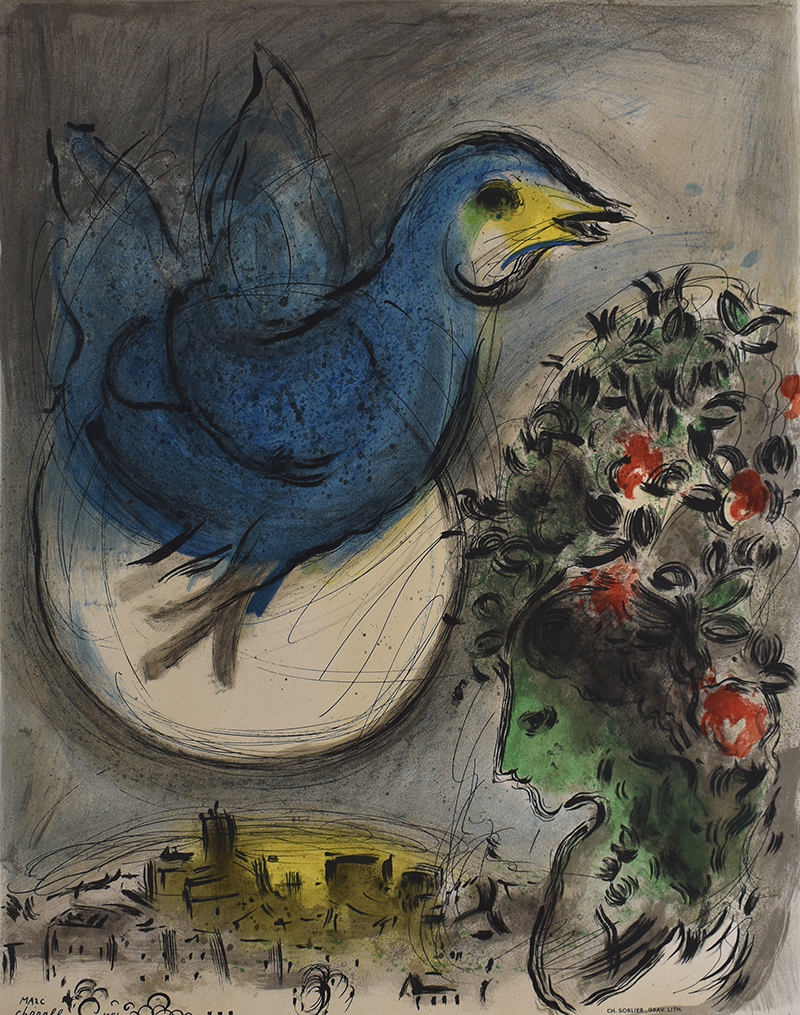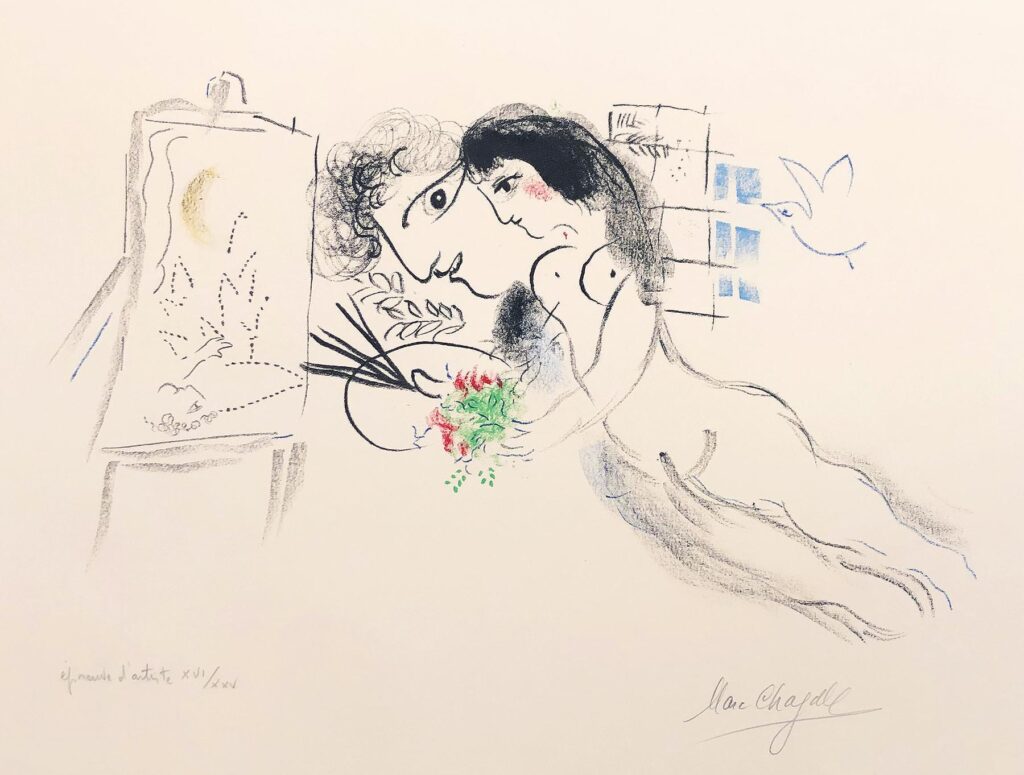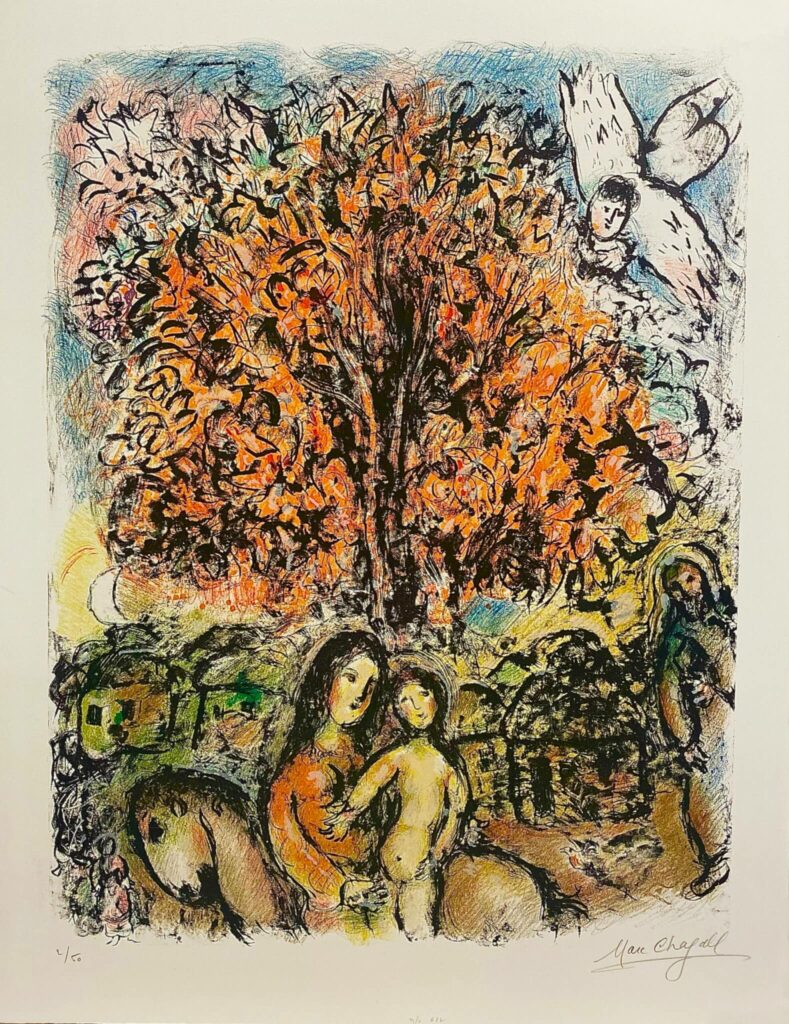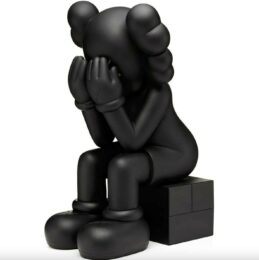Marc Chagall Printmaking
Marc Chagall printmaking is instantly recognisable in its style and subject matter. Chagall began using printmaking techniques when he was 35 years old. He produced a lot of lithographs, etchings, and woodcuts while residing in Berlin, Germany, during the time. Because colour was so important to the artist’s work, lithography became his preferred method.

The art dealer Vollard hired Chagall in 1923 to illustrate the Bible, La Fontaine’s Fables, and The Dead Souls by Gogol. Etching was employed for each of the three series. Tragically, in July 1939, Vollard was killed in an automobile accident. He spent years working on projects and was a noted perfectionist who, among many other planned books, never finished Les Ames Mortes, Les Fables, or his copy of the Bible. (To be honest, Chagall had only just about finished his etchings for the Bible at this point; he had already finished the plates for the first two books.)
Chagall fled to the United States in exile from France that was under Nazi occupation in 1941. Chagall’s prints and paintings were featured in a significant retrospective exhibition hosted by the New York Museum of Modern Art in 1946. The exhibition was extremely well received and was afterwards presented in Chicago.

Chagall returned to France in 1947 and started a brand-new phase of his printmaking endeavours. At the age of 63, Chagall worked with the Parisian publisher Mourlot and essentially learnt how to make lithographs from scratch, almost like an apprentice. Charles Sorlier, a master printer with outstanding skill, served as this talented “apprentice’s” mentor. Chagall frequently worked in Mourlot’s printing workshop under Sorlier’s supervision.
Vichy For the duration of the war, Chagall, his wife, and their daughter emigrated to New York from France because it was unsafe for Jews to dwell there (and a few years after it). Etchings have mostly been the focus of his printmaking up until this point. But in 1948, he created his first significant body of lithographic work, “Arabian Nights,” which featured four tales from the collection of South Asian and Middle Eastern folklore known as The Thousand and One Nights.
Before Matisse passed away in 1954, Picasso remarked that “Chagall would [soon] be the only painter left who understands colour.” Chagall was recognised for the vibrant palette of his paintings. Lithography gave him the opportunity to convey the same richness in prints, giving the pictures a magical quality that is essential to his visual narrative.
After returning to France in the early 1950s, Chagall forged a close and sustained partnership with the master printer Charles Sorlier. In the lithography workshop where Sorlier worked, Imprimerie Mourlot, artists like Picasso, Braque, and Miró also produced prints.

Nothing about Chagall “is just how we imagine it’s going to be,” Sorlier observed in 1974. He possesses the exceptional capacity to start over every morning. For him, every day is a new day, every bloom is the most brilliant, and every fruit is the tastiest. Lithography is reborn with each stone… It cannot be denied that there are occasions when it appears as though an angel has entered the workshop; I have had the uncommon privilege of witnessing Chagall at work.
Additionally, Chagall created numerous unique prints (i.e. works that were not part of a series). These frequently feature the same themes as his paintings that we are accustomed to, like lovers floating in the air and rooftop violinists. The artist produced over a thousand prints throughout the course of his career, mostly lithographs and etchings. On March 28, 1985, he passed away in Saint-Paul, France, at the age of 98.
Marc Chagall Prints
View available Marc Chagall prints here.


